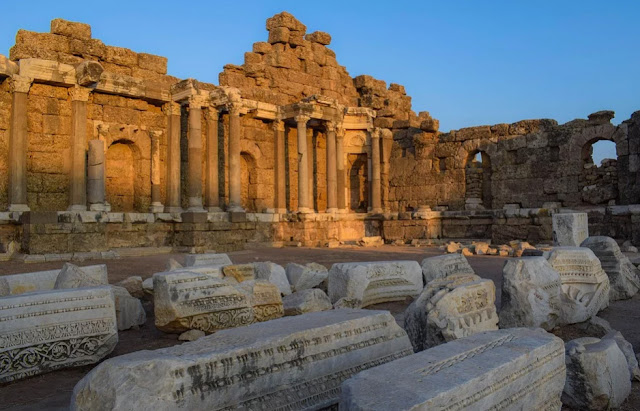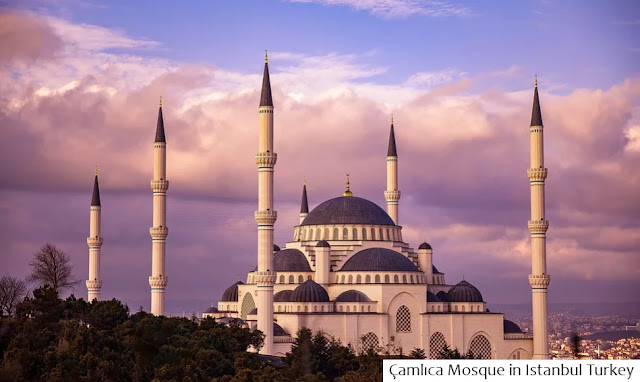The decline of the Abbasid dynasty began more clearly with the establishment of the Danisymandiyah Dynasty (1671 - 1177 AD) and Qaramaniyah (1256 - 1483 AD). After the destruction of Baghdad at the hands of the Mongols, the Turks increasingly strengthened their independence in building their own strength, as did the Ottomans (1281 - 1924 AD). Even the influence of dynasties reached a very wide area, including Eastern Europe, Asia Minor, Central Asia, the Middle East, Egypt, and East Africa.
The emergence of the Ottoman dynasty in Turkey occurred when the Islamic world experienced the fragmentation of power in the second period of the Abbasid rule (about the 9th century). Before that, despite the rule of the Umayyads in Andalusia (755 - 1031 AD), the liberation had increasingly become since the 9th century AD. In that century various dynasties emerged such as the Bani Aghlab in Kairawan (800 - 900 AD), the Children of Thulun in Egypt (858 - 905 AD), Bani saman in Bukhara (874 AD - 1001 AD) and Bani Buwaih in Baghdad and Shiraz (932 - 1000 AD).
The Ottoman Empire ruled extensively in Asia Minor since the emergence of the dynasty's supervisors, Ottoman, in 1306 AD The Ottomans took their name from Usman I (1290 - 1326 AD), the founder of this kingdom and his descendants in power until 1922.
Among the Ottoman Muslim countries that could establish the greatest and longest-ruling kingdom. At the time of Sultan Usman, the Turks seized not only the Arab countries but also the whole area of the Caucasus and Vienna. From Istanbul, the kingdom's capital, they controlled areas around the Mediterranean and for centuries Turkey was an important factor in the calculation of political experts in Western Europe.
The Ottoman Empire was an Islamic caliphate that had a great influence on civilization in the Islamic world. And in this paper, we will explore important matters relating to the Islamic civilization of the Ottoman dynasty in Turkey.
As for the founder of the Ottoman empire, the Turks from the Oghuz tribe inhabiting the Mongols and northern regions of China. Over a period of about three centuries, they moved to Turkistan, then Persia and Iraq. They converted to Islam around the ninth or tenth century when they settled in Central Asia.
Under the pressure of the Mongol invasion in the 13th century, they fled to the west and sought refuge in the midst of their siblings, the Seljuq Turks, in the highlands of Asia Minor.
Under Ertoghul's leadership, they devoted themselves to Sultan Alauddin II, Sultan of Seljuq who happened to be at war with Byzantium. Thanks to their help, Sultan Alauddin presented a piece of land in Asia Minor that borders Byzantium. Since then they fostered their new territory and chose the city of Shuhud as the capital.
In 1300 AD, the Mongols invaded the Seljuq kingdom and Sultan Alauddin was killed. The Seljuq Kingdom was then divided into several small kingdoms. The Ottomans then declared independence and full control over the occupied territories. Since then the Ottoman Empire was established.
The first ruler was Usman who was also called Usman I. After Usman announced himself as Padisyah Al-Usman (the great King of the Usman family) in 699 H (1300 AD) step by step he could expand his kingdom. He invaded the Byzantine border and conquered the city of Broessa in 1317 AD, then in 1326 AD was made the capital of the Ottoman Empire.
During the reign of Orkhan (1326-1359 AD) the Ottoman Empire was able to conquer Azumia (1327 AD), Tasasyani (1330 AD), Alexandria (1328 m), Ankara (1354 AD), and Gallipoli (1356 AD). This area is the part of the European earth that was first occupied by the Ottoman Empire.
When Murad I came to power (1359 - 1389 AD) in addition to strengthening domestic security, he expanded to Europe. He was able to conquer Adrianople, Macedonia, Sophia, Salonia and the whole of northern Greece. Anxious about the progress of this kingdom's expansion into Europe, the Pope stirred up the spirit of war. A large number of European allied forces were prepared to repel the Ottomans. This army was led by Sijisman, king of Hungary. But Sultan Bayazid I (1389 AD-1403 AD) who succeeded Sultan Murad I could destroy the European Christian allies. This event is a very brilliant historical record for Muslims.
The expansion of the Ottoman empire had stalled for some time. When the expansion was directed at Kostantinopel, the Mongol army led by Timur Lenk carried out an attack on Asia Minor. A great battle took place in Ankara in 1402 AD The Ottoman Empire was defeated. Bayazid and his son, Musa were captured and died in 1403 AD
The defeat of Bayazid in Ankara had bad consequences for the Ottoman empire. The Seljuq rulers in Asia Minor broke free from the Ottoman empire. Regions of Serbia and Bulgaria also proclaimed independence. In that case, Bayazid's sons were fighting to overpower. This bad atmosphere only ended after Sultan Muhammad I (1403-1421 AD) was able to overcome it. Sultan Muhammad tried hard to unite his country and restore strength and power as before.
After Timur Lenk died in 1405 AD, the Mongol sultanate was divided and divided among his sons who were at odds with one another. This condition was exploited by the Ottoman authorities to break away from Mongol rule. However, at that time there was also a dispute between the sons of Bayazid (Muhammad, Isa, and Sulaiman). After ten years of power struggle, Muhammad finally defeated his brothers. Muhammad's first attempt was to make improvements and lay the groundwork for internal security. His efforts were continued by Murad II (1421-1451 AD) so that the Ottoman Turks reached the peak of their progress during the time of Muhammad II or commonly called Muhammad Al-Fatih (1451-1484 AD).
 |
| Ruins of buildings in Turkey from the Ottoman dynasty |
The Ottomans reached glorious when the kingdom was able to conquer the center of civilization and the center of Christianity in Byzantium, namely Constantinople. Sultan Muhammad II, known as Sultan Muhammad Al-Fatih (1451 - 1484M), defeated Byzantium and conquered Kostantinopel in 1453 AD
The Byzantine capital was finally conquered by Islamic forces under the Ottoman Turks during the reign of Sultan Muhammad II who had the title Al-Fatih, "the conqueror". Muslim forces have repeatedly since the Umayyad period tried to conquer Constantinople but always failed because of the strong fortifications in the old city.
With the opening of the city of Constantinople as the strongest bastion of the Byzantine Empire, it further facilitated the expansion of the Ottoman Empire to the European continent. And eastern Europe was increasingly threatened by the Ottoman Empire because the Ottoman expansion was also carried out into this region, even to the gates of the city of Vienna, Austria.
However, when Sultan Salim I (1512 - 1520 AD) ascended the throne to become a sultan, he turned his attention to the east by conquering Persia, Syria, and the Mamalik Dynasty in Egypt. Sultan Salim's efforts were continued by Sultan Sulaiman Al-Qanuni (1520 - 1566 AD). Sulaiman successfully conquered Iraq, Belgrado, the islands of Rhodes, Tunis, Budapest, and Yemen. Thus, the vast territory of the Ottoman Empire at the time of Sultan Sulaiman Al-Qanuni covered Asia Minor, Armenia, Iraq, Syria, Hijaz, and Yemen in Asia, Egypt, Libya, Tunis and Algeria in Africa, Bulgaria, Greece, Yugoslavia, Albania, Hungary, and Romania in Europe.
After Sultan Sulaiman died there was a power struggle between his sons, which caused the Ottoman empire to retreat. However, despite the setbacks, this kingdom for several centuries is still seen as a strong country, especially in the military field. The Ottoman Empire, which ruled for almost seven centuries (1299 - 1924 AD), was ruled by 38 sultans.
The glory of the Ottoman Empire was experienced in the 16th century when the Ottoman Dynasty reached its glory so that its territory stretched from the Persian Strait in Asia to the gates of the city of Vienna and from the Sea of Gaspienne in Asia to Algeria in West Africa. The population of the Ottoman Turks consisted of Europeans from Hungary and even various Christians.
The progress and development of the vast and rapid expansion of the Ottoman Empire were followed by advances in various fields of life, including aspects of civilization.

